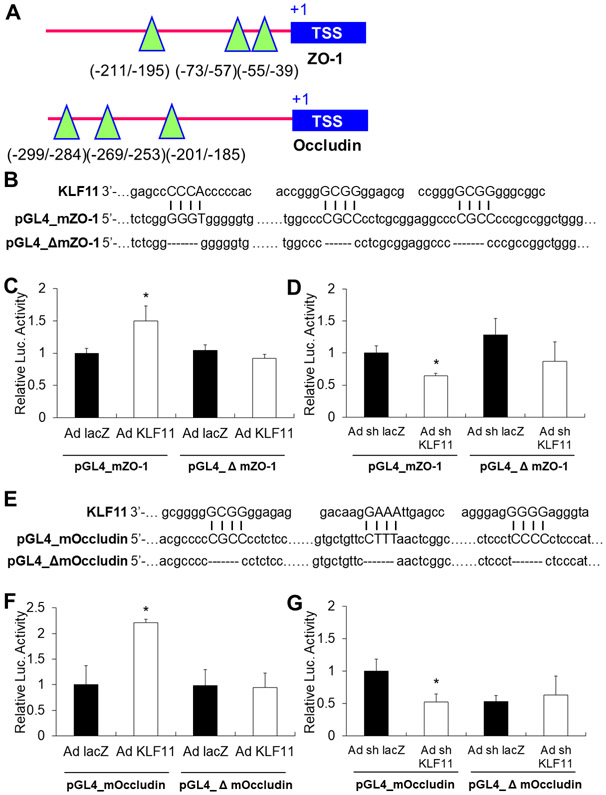Figure 8.
KLF11 transcriptionally activates ZO-1 and occludin. (A) Potential KLF11 binding site in the promoter region of mouse ZO-1 and occludin. TSS: transcription start site. The green triangles mark the binding sites of KLF11. The numbers indicate the relative distance to TSS, which is labeled as +1. (B) 1kb of the mouse ZO-1 promoter or a mutated ZO-1 promoter (deleted all three KLF11 binding sequences, Δ mZO-1) was cloned into the pGL4.10[luc2] vector. The pGL4 promoter constructs were then transfected into bEnd.3 cultures. bEnd.3 cells were also co-transduced with an empty adenovirus (Ad. LacZ) or adenoviral vectors carrying mouse KLF11 (Ad. KLF11) for 48-72 h prior to performing luciferase reporter activity assays. (C) KLF11 overexpression in bEnd.3 cells significantly increased luciferase activity of pGL4_mZO-1, which contains all three KLF11 binding sequences (n=4 per group). (D) On the contrary, the luciferase activity was significantly reduced in the pGL4_mZO-1 group co-transfected with Ad. shKLF11 (n=4 per group). (E) The occludin promoter or a mutated occludin promoter (deleted all three KLF11 binding sequences, Δ mOccludin) was cloned into the pGL4.10[luc2] vector. (F) KLF11 overexpression significantly increased luciferase activity of pGL4_mOccludin, but not pGL4_Δ mOccludin (n=4 per group). (G) On the contrary, luciferase activity was significantly reduced in the pGL4_mOccludin group co-transfected with Ad. shKLF11 (n=4 per group). Results shown are representative of three separate experiments with similar results. Data are expressed as mean ± SEM. * P < 0.05 vs. Ad. LacZ group or Ad. shLacZ group.

